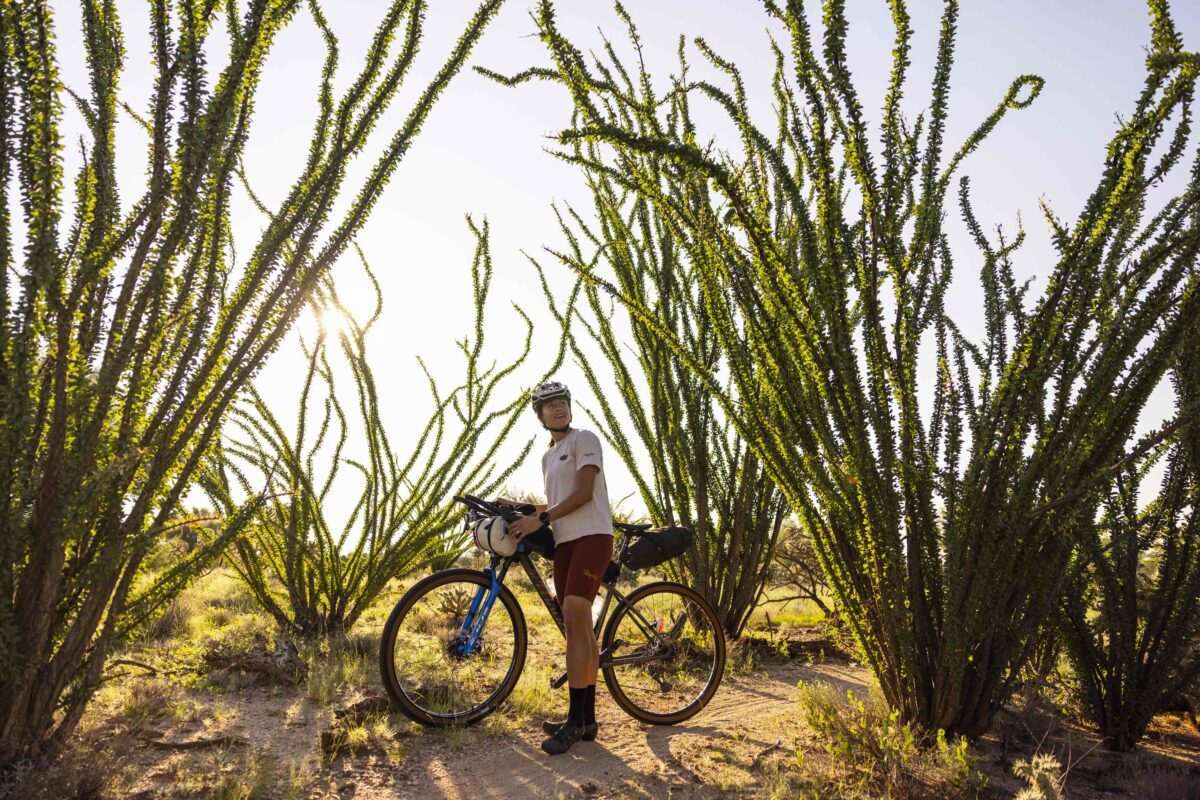Lael Wilcox of Tucson is planning something special for 2024: bikepacking 18,000 miles around the world. She’s still planning the route. And she isn’t going for easy. “I think a lot of people want to design the flattest route they can, but I love riding in the mountains, so screw it I’ll just ride in the mountains,” Wilcox said. “That’s way more inspiring for me.”
Haven’t heard of bikepacking? It’s a relatively new concept, but it’s simple to understand. You grab a mountain bike, load your essentials, and then take off on a multi-day trip over trails. Maybe it’s an overnight, maybe a couple of weeks, or perhaps you dream of biking across the globe.
Depending on your chosen route, almost any mountain bike might do. However, snowy or sandy conditions call for fat tires, and full-suspension bikes will serve you better on technical trails.

Bikepacking events
You can bikepack on your own or with friends. Or you can enter a bikepacking race. Event organizers put together some brutal routes. On November 3 this year, The Tassie Gift 2023 took riders on a 1,800-kilometer (1,118.4-mile) race that traversed trails, roads, and goat tracks on the Australian island of Tasmania. Don’t mind the cold? Check out the Fat Viking 2024 on January 27. It’s a 150-kilometer (93-mile) ultra-endurance race through the snowy Norwegian highlands.

In the United States, the Arizona Trail Race is an unofficial self-supported bikepacking event. Riders choose between a 300-mile and 800-mile trek, which takes them from the Mexican border up to Utah. Each race is a grueling series of ups and downs. Those riding the full distance must carry their bikes for 21 miles across the Grand Canyon!
Wilcox set a record for the 800-miler in April of 2022, finishing it in 9 days, 8 hours, and 23 minutes. “I think the hardest thing about the Arizona Trail is getting enough water. If I can time where I sleep to be near a freshwater source, that’s ideal,” Wilcox said. “Truthfully, I’m always running at a water and food deficit. When I did it the last time, I packed full cheesecakes, and I would eat those because they are so calorie dense. I also drank salsa because I felt like I needed some vegetables. It sounds wacky, but when you’re out there in the desert, your body starts craving bizarre things.”

Making bikepacking female-friendly
The 37-year-old Wilcox loves her adopted home of Tucson. It’s her favorite place to ride and train. This November, she organized a 400-mile cycling event there, the Tucson Komoot Women’s Rally. It’s the first Komoot held outside of Europe. Komoot women’s rallies are designed to make adventure cycling more accessible to women, nonbinary, and trans riders. About 50 women aged 19 to 70 plan to participate in the weeklong event.
Wilcox also spearheads Tucson’s Girls Riding Into Tomorrow (GRIT), a program that introduces 11 and 12-year-old girls to long-distance cycling. Underprivileged girls get six weeks of bike training culminating in an overnight weekend adventure ride. And they get to keep the bike they train on. Wilcox loves to see girls surprise themselves with what they can do. “When I see people take on new things, and shock themselves, and get excited, it brings me back to why I love this sport so much.”

